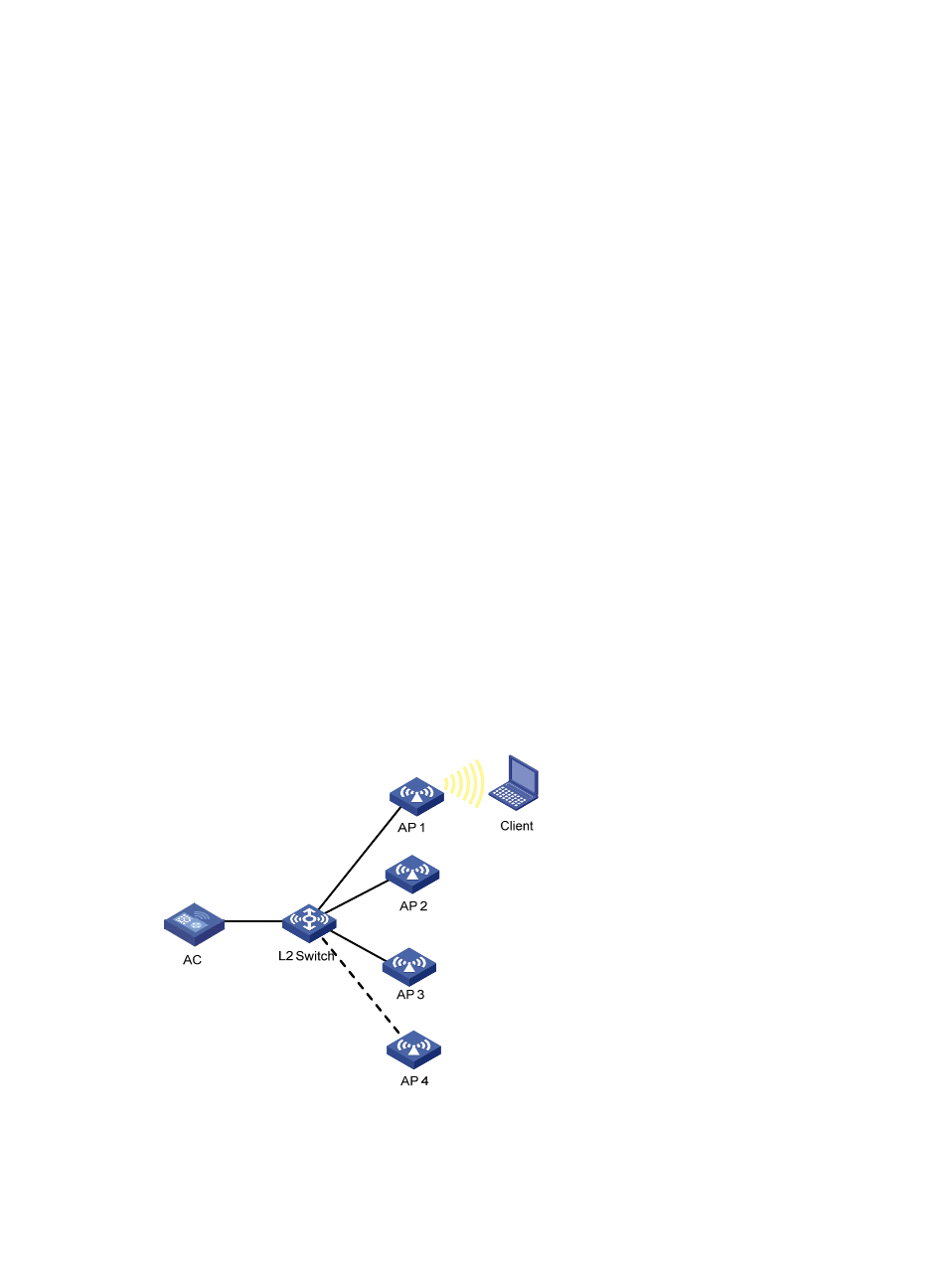Verifying the configuration, Configuring a radio group, Network requirements – H3C Technologies H3C WX3000E Series Wireless Switches User Manual
Page 138

126
# Specify the maximum number of neighbors, the power adjustment threshold, and the calibration
interval.
[AC-wlan-rrm] dot11bg adjacency-factor 3
[AC-wlan-rrm] dot11bg calibrate-power threshold 65
[AC-wlan-rrm] dot11bg calibrate-power min 1
Verifying the configuration
When AP4 joins, the number of neighbors reaches 3. Assume the signal strength of AP 4 is the third
among all neighbors (AP 2, AP 3, and AP 4). AP 4 thus becomes the neighbor AP that perform power
detection.. If AP 4 detects that the power of AP 1 is –90 dBm, which is lower than the power adjustment
threshold –80 dBm, AP 1 will increase its transmission power. If AP 4 detects that the power of AP 1 is
–70 dBm, which is higher than the power adjustment threshold –80 dBm, AP 1 will decrease its
transmission power. You can use the display wlan ap { all | name apname } rrm-status command to
check the adjusted power (TxPower).
The adjusted power of AP 1 cannot be lower than the minimum transmission power (1 dBm in this
example).
Configuring a radio group
Network requirements
As shown in
, AP 1 through AP 3 are connected to the AC.
•
Configure auto DFS so that the AC can automatically switch the working channel of an AP when the
signal quality on that channel is degraded to a certain level.
•
Configure auto TPC so that the AC can automatically adjust the power of an AP when the third
neighbor of that AP is discovered (or in other words, when AP 4 joins).
•
Add radio 1 of AP 1 and radio 1 of AP 2 to a radio group to prevent frequent channel and power
adjustments.
Figure 66 Network diagram
Verifying the configuration
# Create a WLAN ESS interface.